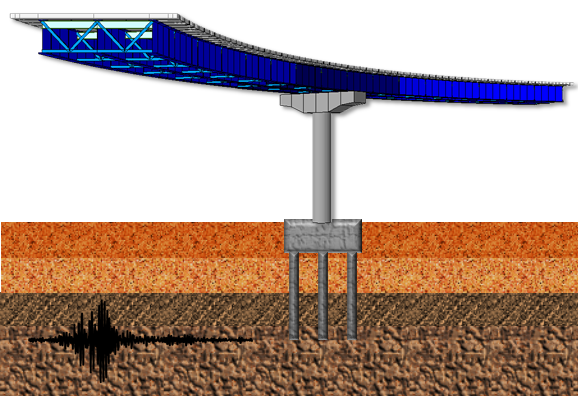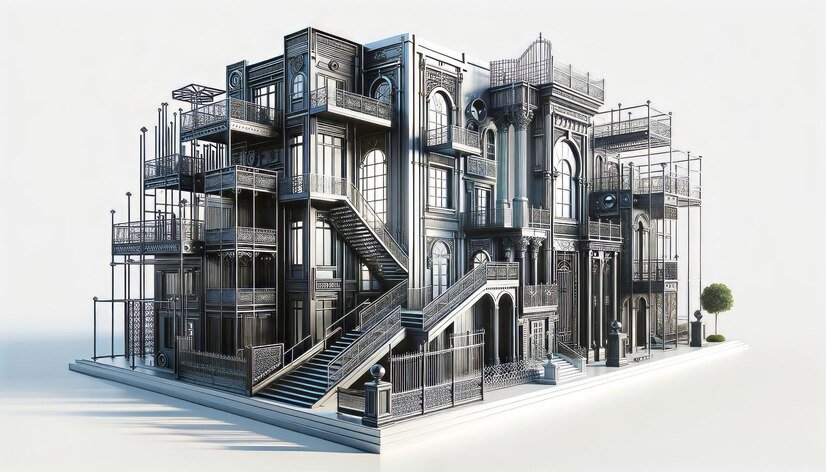Soil-Structure Interaction (SSI) is a nuanced and complex field within civil engineering, often reserved for specialized experts due to the intricate physics, advanced modeling, and high precision it demands. As an expert in this niche area, I have spent years working on the theoretical frameworks, computational models, and practical applications of SSI, focusing on optimizing structures for stability, durability, and resilience against dynamic forces such as seismic activity.
In this article, I’ll dive into the complexities of SSI, exploring the core principles, innovative techniques, and cutting-edge technologies that enable engineers to accurately predict and manage soil behavior in response to structural loads.
Understanding Soil-Structure Interaction: The Basics
At its core, SSI is the study of the reciprocal relationship between soil and structures built upon it. Unlike traditional engineering approaches that assume a fixed and immovable foundation, SSI acknowledges that the ground responds dynamically to the forces exerted by a structure, influencing and altering the behavior of both the soil and the structure.
This interaction is especially critical for high-rise buildings, bridges, and infrastructure in seismic zones, where soil behavior under loading can significantly impact structural stability. As an expert in SSI, my work emphasizes the importance of understanding how soil properties change under various loads and environmental conditions, affecting foundation choices and structural safety.
Why Soil-Structure Interaction is Challenging
There are several reasons why SSI is a challenging and specialized area:

Variability in Soil Properties
Soil is inherently variable, with properties that can differ dramatically within even a small area. Factors such as moisture content, particle size, density, and mineral composition create unique soil profiles, each requiring customized analytical models. This variability makes SSI a complex field, as engineers must develop solutions that account for these differences while remaining practical and cost-effective.
Nonlinear Behavior Under Load
Soil exhibits nonlinear behavior under load, meaning it does not deform in a predictable or linear fashion as force is applied. This behavior is influenced by soil type, load magnitude, loading rate, and environmental conditions, making it difficult to model accurately. Advanced computational techniques, such as finite element modeling, are essential to simulate these interactions, but even these models require expert calibration.
Dynamic and Seismic Impacts
For structures in earthquake-prone areas, understanding dynamic soil-structure interaction is crucial. Soil amplifies seismic waves differently depending on depth, density, and moisture, which in turn affects the forces transmitted to the structure. As an SSI specialist, my work involves using highly sensitive analytical methods to predict these interactions, ensuring that structures are designed to resist seismic forces effectively.
Advanced Analytical Techniques in Soil-Structure Interaction
One of the keys to mastering SSI is the application of advanced analytical and computational techniques that accurately simulate soil behavior and predict structural responses under real-world conditions.
Finite Element Analysis (FEA) and Boundary Element Methods (BEM)
Finite Element Analysis (FEA) and Boundary Element Methods (BEM) are powerful tools for simulating SSI. By dividing soil and structural elements into smaller, manageable components (finite elements), engineers can analyze the response of each element to stress and deformation, yielding a comprehensive view of soil-structure interaction.
In my practice, I employ specialized FEA software to model soil and foundation interaction for complex projects, such as tall buildings on soft soils or bridges spanning variable terrain. With a deep understanding of boundary conditions, material properties, and load distribution, I tailor each model to the specific demands of the project, improving accuracy and predictive power.
Nonlinear and Constitutive Modeling
Soil often behaves nonlinearly, especially under high loads or during seismic events. Constitutive models — which describe soil behavior in terms of stress-strain relationships — are essential for capturing this nonlinear response. Advanced constitutive models like the Mohr-Coulomb model, Drucker-Prager model, and Hardening Soil model allow engineers to simulate complex soil behaviors, including plasticity and hardening.
As an SSI expert, I customize these models to reflect site-specific soil conditions, helping predict how soils will behave under various loads and how this behavior will impact the structure. By refining these models, I can achieve an incredibly accurate simulation, essential for safe and effective designs.
Practical Applications of Soil-Structure Interaction Expertise
Foundation Design Optimization
One of the most valuable applications of SSI knowledge is in foundation design. By accurately modeling soil behavior, I can optimize foundation types and dimensions to minimize settlement, reduce material costs, and increase overall stability. For high-rise buildings or large infrastructure projects, this can mean substantial cost savings and extended structural lifespan.
For instance, in a recent project involving a multi-story building on expansive clay soil, I used SSI analysis to design a foundation system that counteracted soil expansion and contraction. This proactive approach prevented excessive differential settlement, preserving the structural integrity of the building and minimizing maintenance needs over time.
Earthquake-Resistant Design
For structures in seismic zones, understanding SSI is crucial for designing earthquake-resistant foundations. Traditional seismic design often assumes that the structure is rigidly fixed to a non-deformable ground; however, SSI introduces more realistic assumptions about soil flexibility and energy dissipation. By incorporating damping mechanisms and energy absorption into the foundation design, I can enhance a structure’s resilience to seismic forces.
In my practice, I use SSI models to design foundations that reduce the transfer of seismic forces from the soil to the structure, improving safety and stability. In one recent seismic design project, my SSI analysis revealed a potential resonance issue between the building’s natural frequency and the soil’s response, allowing us to adjust the design and avoid amplifying seismic impact.
Retrofitting Aging Infrastructure
SSI expertise is equally valuable in retrofitting aging infrastructure. As structures age, soil conditions often change due to environmental factors, necessitating adjustments to maintain stability. By analyzing soil properties and their interactions with existing structures, I can recommend targeted retrofitting strategies that enhance safety and extend the structure’s usable life.
In a recent infrastructure project involving an aging bridge, my SSI analysis revealed areas where soil erosion was compromising foundation stability. By designing targeted reinforcements and soil stabilization measures, we were able to restore the bridge’s safety and functionality without costly or disruptive foundation replacement.
The Future of Soil-Structure Interaction
Advances in computational power and sensor technology are pushing the field of SSI forward. Real-time monitoring systems embedded within the soil and structure allow us to observe SSI effects as they happen, adjusting models and designs dynamically.
Real-Time SSI Monitoring
With smart sensors, engineers can monitor soil pressures, displacements, and structural responses in real-time. This data can be used to refine models and predict future behavior, providing insights that can inform not only current but future designs. As an advocate for integrating real-time monitoring, I believe this technology represents a leap forward for SSI, transforming it from a predictive science into a dynamic, responsive practice.
Machine Learning in SSI
Machine learning algorithms can analyze large data sets collected from SSI projects, identifying patterns and improving model accuracy over time. As an SSI specialist with a focus on innovation, I have begun incorporating machine learning into my analysis workflow, allowing me to generate more accurate and adaptable models.
For instance, by feeding a machine learning algorithm with historical data from earthquake sites, we can improve predictive accuracy in similar seismic zones. This not only enhances safety but also helps optimize resource allocation, as structures can be designed with greater precision.
Conclusion
Soil-Structure Interaction is a highly specialized field within civil engineering that requires a deep understanding of both soil mechanics and structural behavior. As an expert in this niche, I leverage advanced analytical techniques, sophisticated modeling, and practical experience to design safe, resilient, and efficient foundations for urban infrastructure.
The future of SSI holds exciting potential with real-time monitoring and machine learning, and I’m committed to staying at the forefront of these advancements to continue delivering innovative and effective solutions. Through the precision of SSI, we can build structures that not only stand the test of time but are finely attuned to the ground beneath them.


